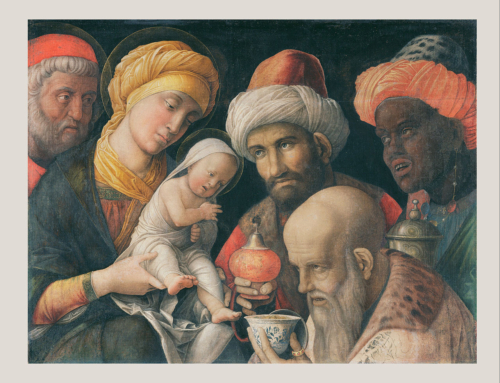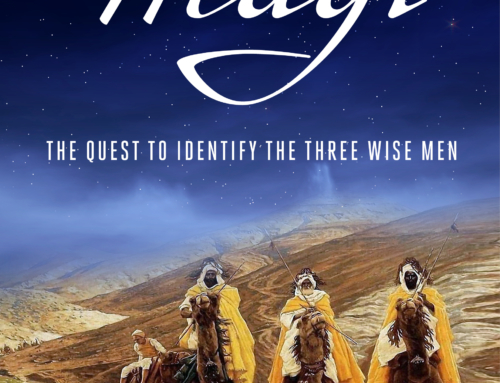Anyone who has done New Testament studies 101 will be familiar with the great grand daddy of New Testament critics Rudolph Bultmann. Born in 1884, the German Protestant rode a wave of modernism which taught that the supernatural elements in the Bible were not compatible with a modern world view, and that they should be dumped.
At the time, the intellectual crock pot in other areas was all a bubble with a fascination with myth and how it originated in primitive cultures, affected the development of literature and the development of religion. The innerleckshuls sniffed out myth everywhere and therefore came up with their wild eyed conspiracy theories that not only the Old Testament, but most of the New Testament as well was “mythical.”
The theory was that the early Christians so elaborated and embroidered the stories of the historical Jesus that they were virtually unrecognizable as history. The early Christians, they theorized, were so enchanted by mythical, mystical supernatural magical stories that they turned Jesus into a marvelous, magical, mystical, miracle working guru.
To reclaim the Bible for modern people, team Bultmann set out to “de-mythologize” the New Testament. It started out that they just wanted to weed out the miraculous element from the stories and, presumably, leave a historical Jesus who was a nice fellow who told a few pretty stories about kindly shepherds and naughty sheep, blessed children on his knee, was kind to poor people and stern with rich people and then died a tragic death because he got mixed up with some unsavory political activists.
Yes, well, they were pretty successful, and sad to say there are still plenty of New Testament scholars grinding out this silly theory. Furthermore, they have influenced several generations of clergy of all denominations and none who have sucked up this half baked theory uncritically.
Now what tickles me is that the end result has not been the de-mythologization of the New Testament by the RE-mythologization. To put it plainly, their attempt to remove myth from the New Testament has resulted in the entire New Testament being treated as a myth.
Here’s what happened: When he was done, Bultmann admitted that, according to his theory, there was virtually nothing that could be known about the historical Jesus. Thus the old joke…”Professor Bultmann! They have discovered the bones of Jesus Christ!”
Bultmann (looking up from fiddling with his pipe) “Ah! So he really existed then?”
Once they established to their satisfaction that virtually nothing in the gospels was historical they had a problem. If this was so, then they had cut off the branch on which they were sitting. They had killed the golden goose. If the whole thing were a fairy tale they (and all the clergy who swallowed their lie) would have to resign and re-train as social workers, and that wouldn’t do. The tenured professorships were too comfortable, the rectories and parsonages too large and the stipends too ready.
So a new gospel was devised in which the modernists continued to tell the stories of Jesus just as if they were true. They stood up on Easter Day and said, “Alleluia! Christ is risen!”. All the people in the pew thought their pastor or priest believed that Jesus had risen from the dead, but the pastor actually believed that “in some sort of way the beautiful teachings of Jesus continued to live in the hearts of his disciples even after his tragic death.”
You get the idea.
Therefore, what the de-mythologizers actually did was to turn the whole of the Christian faith into a myth–a beautiful story which they continued to tell, complete with the rituals of religion and the dignity of liturgy.
The practice of the Christian religion would not longer be about the supernatural duel with the devil, the salvation of souls, the deliverance from hell and the hope of heaven. Instead it would be to do what (the mythical) Jesus did–be kind to animals, tell lovely stories, help the poor, bring people together and give peace a chance.
I find this double think to be incredibly interesting. What a stroke of devious genius on the part of the Ancient Foe!
It was actually nothing new. St Paul described it clearly to his protege Timothy:
But mark this: There will be terrible times in the last days. 2 People will be lovers of themselves, lovers of money, boastful, proud, abusive, disobedient to their parents, ungrateful, unholy, 3 without love, unforgiving, slanderous, without self-control, brutal, not lovers of the good, 4 treacherous, rash, conceited, lovers of pleasure rather than lovers of God— 5 having a form of godliness but denying its power. Have nothing to do with such people.
6 They are the kind who worm their way into homes and gain control over gullible women, who are loaded down with sins and are swayed by all kinds of evil desires, 7 always learning but never able to come to a knowledge of the truth.
But it gets more interesting.
Once the modernist scholars had gutted the gospels and terminated the New Testament they suddenly fell in love with the gnostic gospels.
The Gnostic Gospels are the early church writings which didn’t make the cut and get into the New Testament. They didn’t make the cut for a good reason. They were mostly a load of ridiculous New Agey gobbledegook. Full of genuine fairy tales and fantasy stories about Jesus, they were completely un historical attributed falsely to the Apostles and full of bogus mysticism, goofy theology, dubious morality and more.
Nevertheless, this became a new love interest for the New Testament Scholars. Books and studies were churned out which strove time and again to show how “early” these writings were and therefore how “fascinating” they were and how they “shed light” on the mind of the early Christians.
Except that the were all later than the gospels, obviously bogus and clearly a bunch of nonsense that any Junior High . Sunday School student could figure out.
So what is the end result? The end point of the de-mythologization process was not only to turn the whole of the Christian religion into a myth, but to promote and trust the very writings that we know are nothing but myth and weird mysticism.
One of the Gnostic heresies was called Docetism–which denied that Jesus was really God in the flesh. That is what the modernists follow. They must follow this since they deny that the incarnation of the Son of God of the Blessed Virgin Mary was a real, historical event.
St Paul spoke clearly about them. So did gentle St John:
I say this because many deceivers, who do not acknowledge Jesus Christ as coming in the flesh, have gone out into the world. Any such person is the deceiver and the antichrist.
Dear friends, do not believe every spirit, but test the spirits to see whether they are from God, because many false prophets have gone out into the world. 2 This is how you can recognize the Spirit of God: Every spirit that acknowledges that Jesus Christ has come in the flesh is from God, 3 but every spirit that does not acknowledge Jesus is not from God. This is the spirit of the antichrist, which you have heard is coming and even now is already in the world.







Leave A Comment
You must be logged in to post a comment.